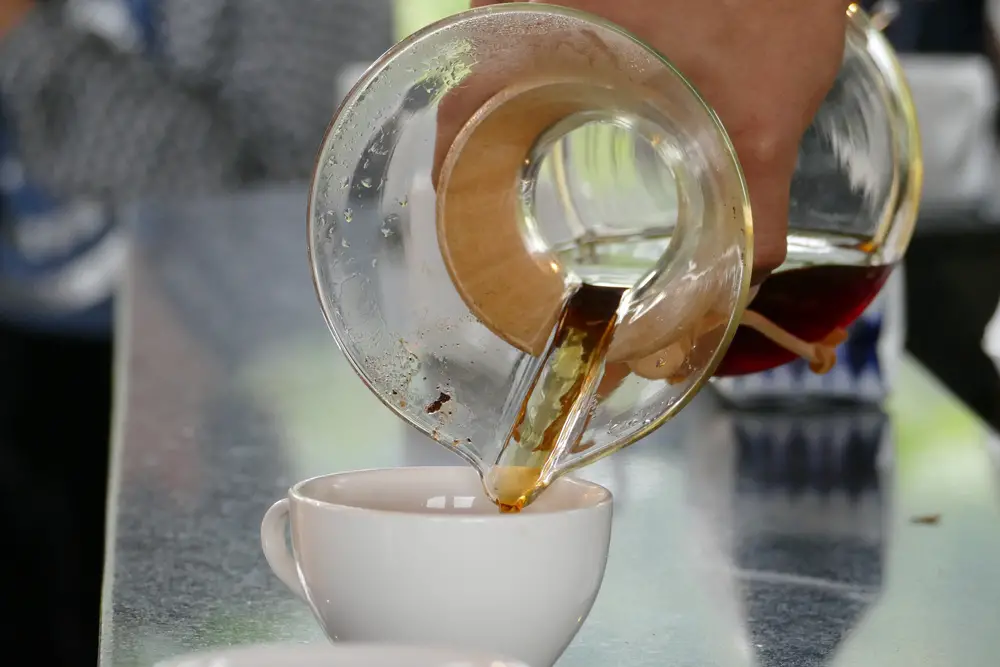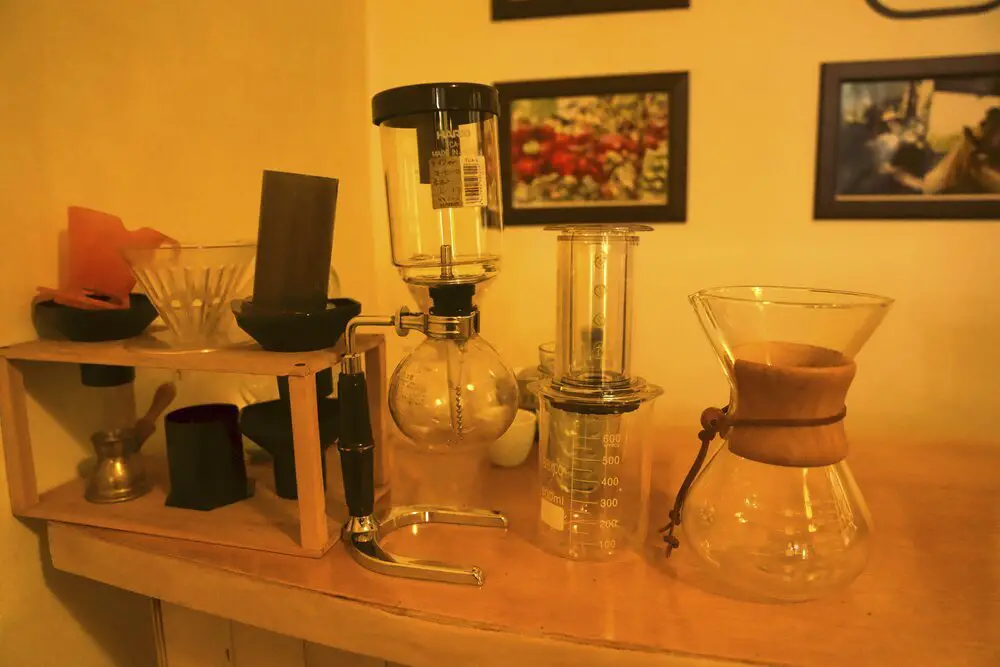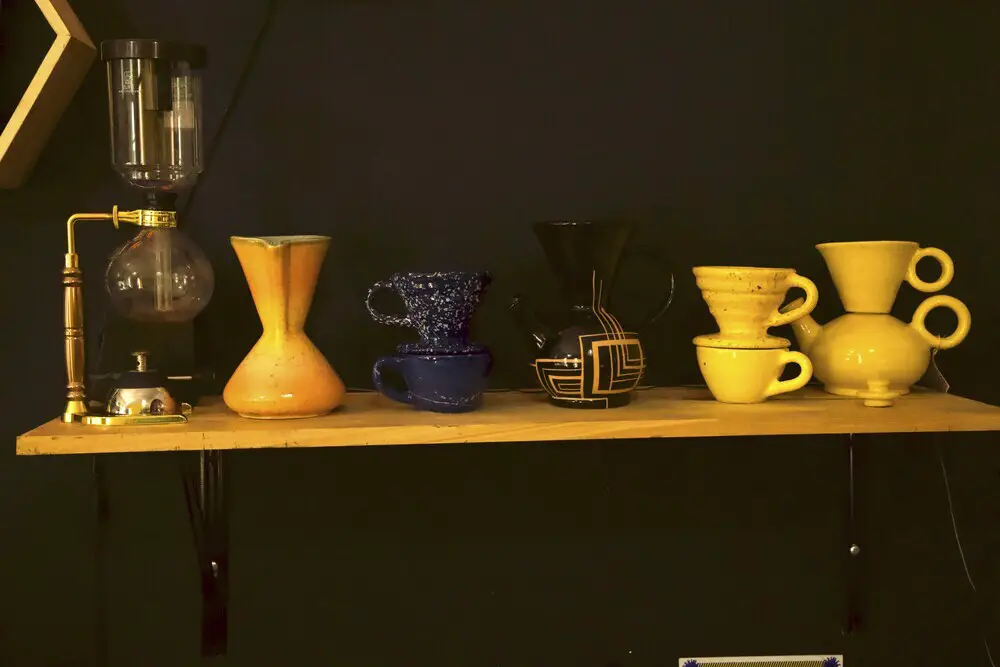We will explain to you how a Moka coffee maker works, what types of coffee can be made with this coffee maker, how to take care of it and so on, so that by the end of this blog you will be an expert on this coffee maker.
Table of Contents
What is a Moka coffee maker?
The Moka coffee maker, also known in some places as Grecas or just Italian coffee maker (where it was made), was invented by Alfonso Bialetti in 1933 when coffee was consumed mostly by wealthy people. With their inventions, Bialetti and other innovators wanted to promote coffee consumption in a faster way.
Bialetti took inspiration from the first espresso machines and designed a coffee maker consisting of three parts: top, funnel and bottom container (a design that has been retained to this day), all made of aluminum. Due to the industrialization of those years, aluminum was one of the best possible materials to make these coffee pots due to its cost of production and its malleability (the ability to deform without breaking).
Despite being an innovative product, it did not have the expected success until a few years later, when the Italian economy was booming, its product, with its innovative design and the rise in the economy and coffee consumption, became so popular that it is estimated that 9 of 10 Italian households had a Moka at home.
These facts made Bialetti one of the leading manufacturers of coffee machines by the early 1950s, and with the demand for coffee increasing worldwide, this was an excellent time for global expansion.
A market that was looking for high quality coffee that was easy and quick to prepare was the perfect market for Bialetti coffee machines.
It was the perfect market for the Moka coffee machines because although the Moka didn’t make espresso, it gave the finished coffee a perfect flavor that could be mixed with other products such as milk, making the Moka even more popular abroad since in countries like the United States Latte and Cappuccino have been and are very successful.
All these factors helped the mocha machine to become an impressive global success, so that total sales by the end of the 20th century are estimated at over 220 million euros.
How does a moka coffee maker work?
To explain how a Moka works, you first need to know all the parts. The main construction consists of three parts: upper tank, funnel/filter and lower tank. Besides these, there are other elements that complement the functionality.
- The upper container is a collection container with a lid and handle, filter and gasket
- Funnel/filter
- There is a pressure valve in the lower tank
Operating the Moka is very simple and here we explain the whole process inside the Italian coffee maker.
The water is filled into the lower tank up to the valve. Fill the funnel with ground coffee. After that, the coffee maker must be tightly closed so that the water does not leak; this should not be done with the handle as it can break off. Incidentally, this risk is even higher when unscrewing.
Place the moka on the stove. At the bottom of the filter is a tube through which the water is filtered once it has reached the boiling point.
When the water reaches the boiling point, the pressure in the bottom tank of the moka increases and for physical reasons, since there is no pressure in the top tank, the water starts to rise through the tube and pass through the filter that holds the coffee.
Once the top tank is full of coffee, you can turn off the fire and enjoy your coffee.
Advantages of a moka coffee machine
- A moka is perfect to take with you and can also be used with a gas cooker or open fire.
- Due to the extraction method and the pressure applied, a coffee is brewed that is very similar to an espresso.
- Operation and cleaning are very easy.
Preparing coffee in a mocha machine
Now that you know how the Moka works, we will show you step by step how to brew the coffee in your Moka and how to get the most out of this coffee maker.
If you’ve just bought your moka maker, ideally before brewing the coffee you should disassemble all the parts and wash them with warm water to remove any contamination; remember not to use a hard sponge to wash down your coffee maker.
Choose your coffee
When choosing your coffee, there are many factors that will affect your final choice.
Try different coffees and grinds to get the best taste for you. There is no one-size-fits-all recipe here.
Avoid the following with your Moka
There are some common habits that can affect the taste of our coffee. We tell you what not to do with your coffee and moka so you can continue enjoying a good coffee.
- If you don’t buy the right coffee for your coffee maker, the coffee can have an unpleasant taste and texture.
- Choosing improperly roasted coffee can affect the final taste of the coffee and lead to burnt flavors and odors.
- Do not reheat the coffee because if it is heated more than once in a moka maker, it will lose its aromatic qualities and will taste and smell slightly burnt.
- The temperature when cooking should always be as low as possible so that the coffee just comes to the top. If the heat is too high, the coffee does not taste good or even tastes burnt.
- Do not compress the ground coffee in the filter as this may prevent the water from flowing properly.
Maintaining the Moka coffee machine
Now you might be wondering how do I care for my coffee maker? Here is a list of basic care instructions for this type of coffee maker.
- After each use you should wash the moka. Depending on the coffee, the dirt can be stronger and soap should be used.
- It is recommended not to use strong soaps and concentrated products in order to preserve the flavor of the coffee.
- Clean your coffee maker every two weeks or once a month by disinfecting all parts.
- The moka should always be dried to prevent mold and germs from multiplying.
- Use soft sponges on the inside of your moka.



